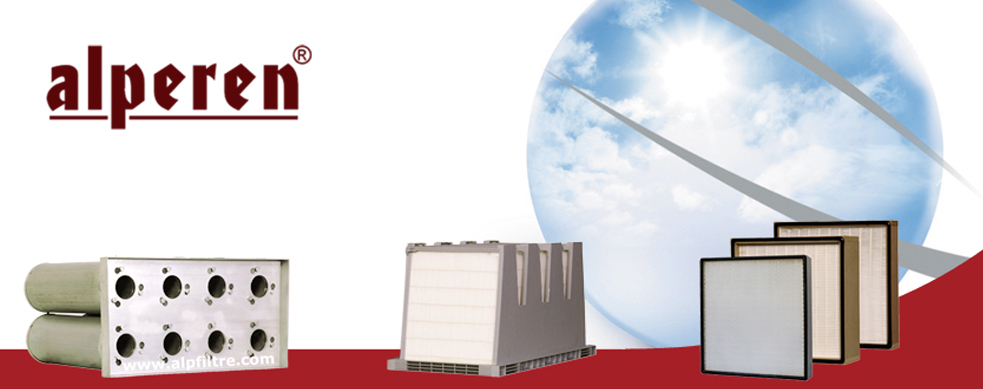
How is the air purified from bacteria and viruses?
Composed of 21% oxygen, 78% nitrogen, 1% argon and very small amounts of other gases, the air also contains various particles. What should be considered is the purification of the air we breathe from gases and particles that harm our health such as carbon dioxide, methane, carbon monoxide, ozone, ammonia, hydrogen sulfide, pollen, mold. In other words, if the air is not purified from polluting gases and particles, regardless of its source, we may face negative consequences for our health.
Inability to filter the air at ideal values;
- Reproduction of microorganisms and increased risk of infection,
- The decrease in the expected air flow,
- Poor indoor air quality,
- The pollution of the ventilation channels,
- Ventilation indoor units are dirty and cannot function,
- High energy costs and maintenance times,
- It causes negativities such as the malfunction of the devices in the ventilation systems.
Air filters are tested taking into account the amount of particles present in the air, the mass of the particles, or optical comparison of the particle traces.
Air filters are used to improve air quality by separating particles, microorganisms, bacteria and viruses from the air. Suitable filters are used in ventilation systems to capture pollutants such as dust, particles, viruses and bacteria in the air. Filters should be leak proof and should be manufactured in a way that does not allow the slightest leakage. A gradual filtering system can be used depending on the desired air quality.
In ventilation applications, the cleanliness of the air is important for industrial manufacturing as well as for human health. Particle classification is made according to the size of the particles in the air. According to the properties of the application, the types and sizes of the particles in the air should be determined and the filter selection should be made according to the desired level of cleaning. In the selection of an air filter, the desired air quality, filter efficiency and particle capture capacity of the filter are effective.
The main factors in the selection of air filters can be listed as sieve effect, inertia effect, capture effect, diffusion effect and electrostatic effect.
The sieve effect can be described as the simplest mechanism. In the sieve filtering effect, particles with a diameter larger than the opening between the two filter media used as filter elements are captured.
Under the effect of inertia, when a filter media comes out in front of the moving particles, they continue on their way by rotating around it without distorting their parallelism. The particles entrained in the air flow cannot rotate around the filter media due to their inertia and they hit the media and adhere to the surface of the media. This effect is directly proportional to the increase in the air velocity, the increase in the particle diameter and the reduction of the media diameter.
In the trapping effect, if the particle diameter is too small, the particle usually follows a trajectory around the filter media with the air. If the traced trajectory passes closer to the media than the particle radius in the movement of the particle around the media, the particle is captured by the media and adheres to the media. This effect increases as the particle diameter increases and the distance between the media diameter and the filter media decreases. The smaller the diameter of the filter media close to the particle diameter to be captured in a filter media, the stronger the capture effect.
In the diffusion effect, if the particle diameter is smaller than 1μm, the gas molecules colliding with the particles can cause the particles to move irregularly. As a result of these behaviors of gas molecules known as Brownian motion, particles colliding with the filter media adhere to the filter media. This effect increases as the air velocity, particle diameter and media diameter become smaller.
These filters, which have a large diameter fiber medium in electrostatic effect, are electrostatically charged to increase the particle capture efficiency. Due to the low cost and air flow resistance in these filters, a large diameter fiber media is generally preferred. Particles caught on the surfaces of these filters lose their electrostatic charge as they condense over time in the charged regions.
In order to effectively clean the air from pollutants, the combination of impact and capture principles must be provided. The impact filter is effective on large particles, while the capture principle separates small and submicron particles from the air.
Since the total efficiency of a filter is the sum of the filtering effects, the minimum value of the total efficiency under specified conditions is formed. With increasing particle size, the effects of entrapment and inertia increase, while the diffusion effect decreases. This is the most difficult particle size to capture in a filter, abbreviated as MPPS.
Working with the viscous impact principle, the filters can separate particles from 3 microns to 100 microns from the air. This is followed by filters with enlarged surfaces that work with the capture or diffusion principle. The particle size these filters separate from the air is 0.4 microns. At the last stage, there are hepa and ulpa filters that work only with the diffusion principle and hold particles of 0.3 micron and below.
In order to get the best efficiency from the air filters, the speed of the air passing over the surface of the filters is not predicted to be more than 2.5 m / s. The reduction in velocity can be achieved by increasing the air duct cross section or filter surface areas.
The particles, which are large in size and weight, are filtered by the pre-filter while passing through the ventilation system where the air velocity is 2.5 m / s. After the pre-filters, extended surface and high efficiency filters should come. At this stage, by widening the filter surface, the air velocity of 2.5 m / s should be reduced up to 0.1–0.2 m / s in the filter media, and small and light particles that cannot be caught by the pre-filters should be caught in these stages according to the diffusion principle.
Depending on the pollutants in the air, it is possible to purify the air completely from particles, microorganisms, viruses and bacteria thanks to filter groups such as G4, F7, F9, hepa, ulpa, ultraviolet, carbon, electrostatic, ozone, plasma ionizer to be applied in a properly designed air filtration system.
İlker KURAN
Alperen Ltd. Şti.







